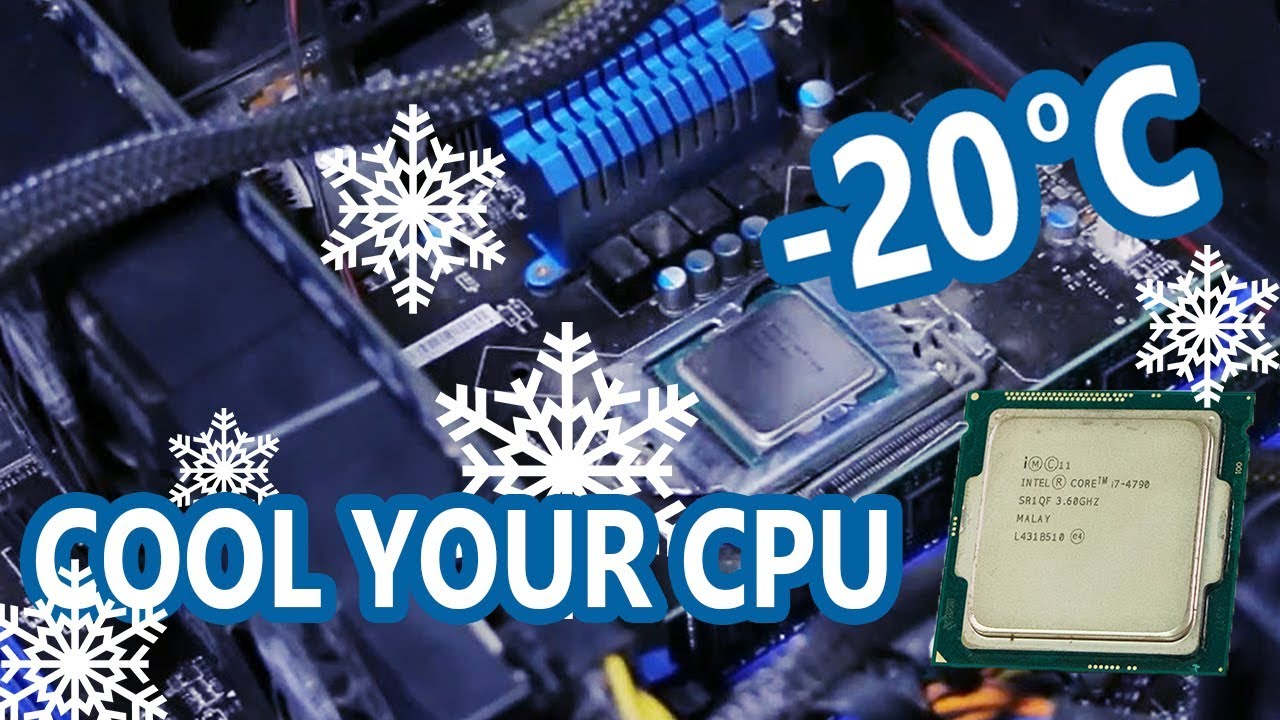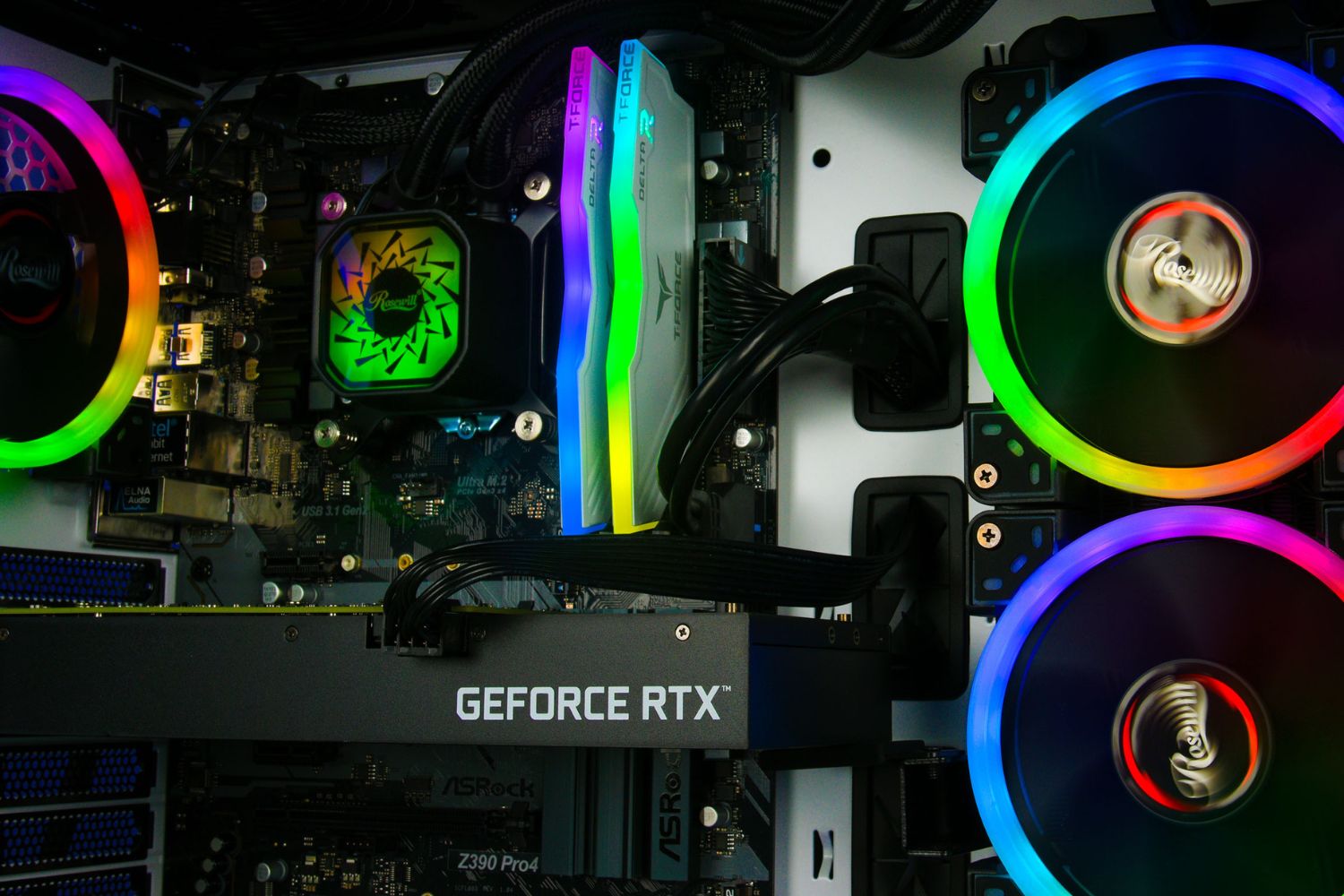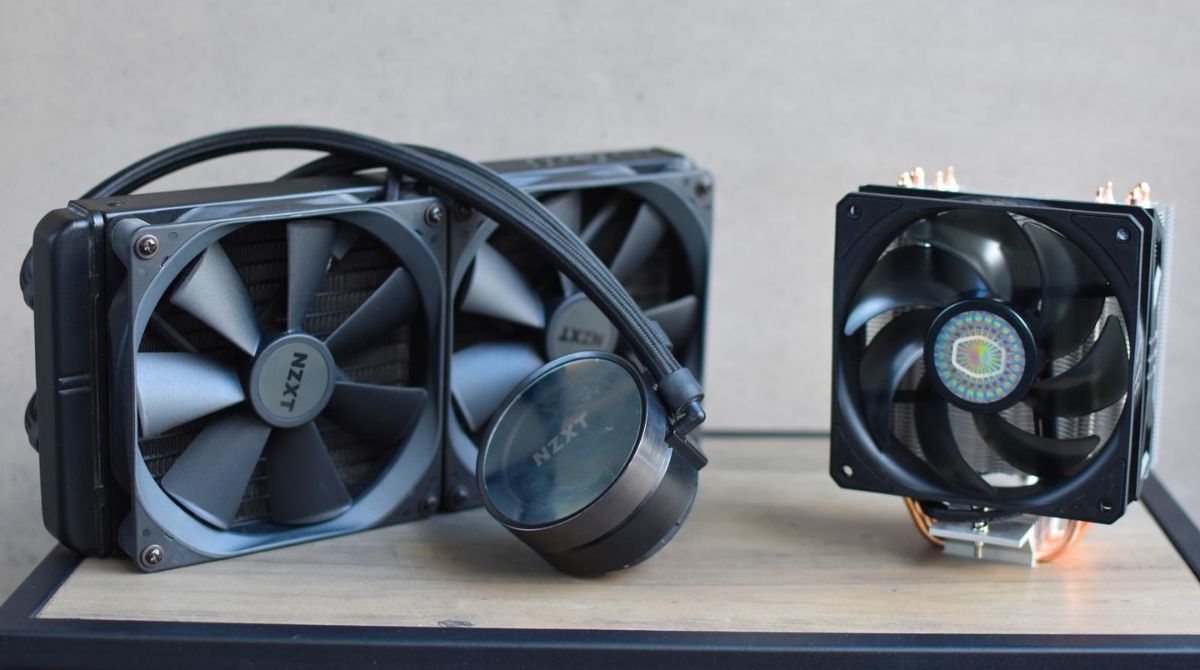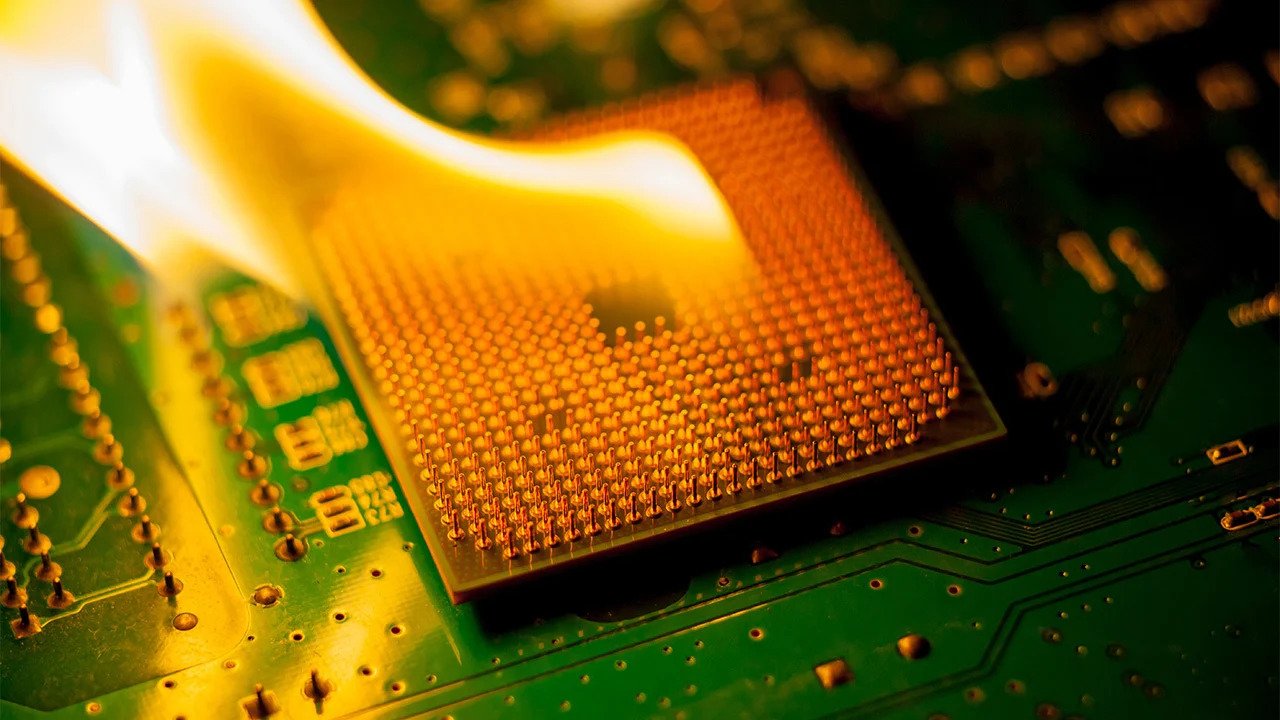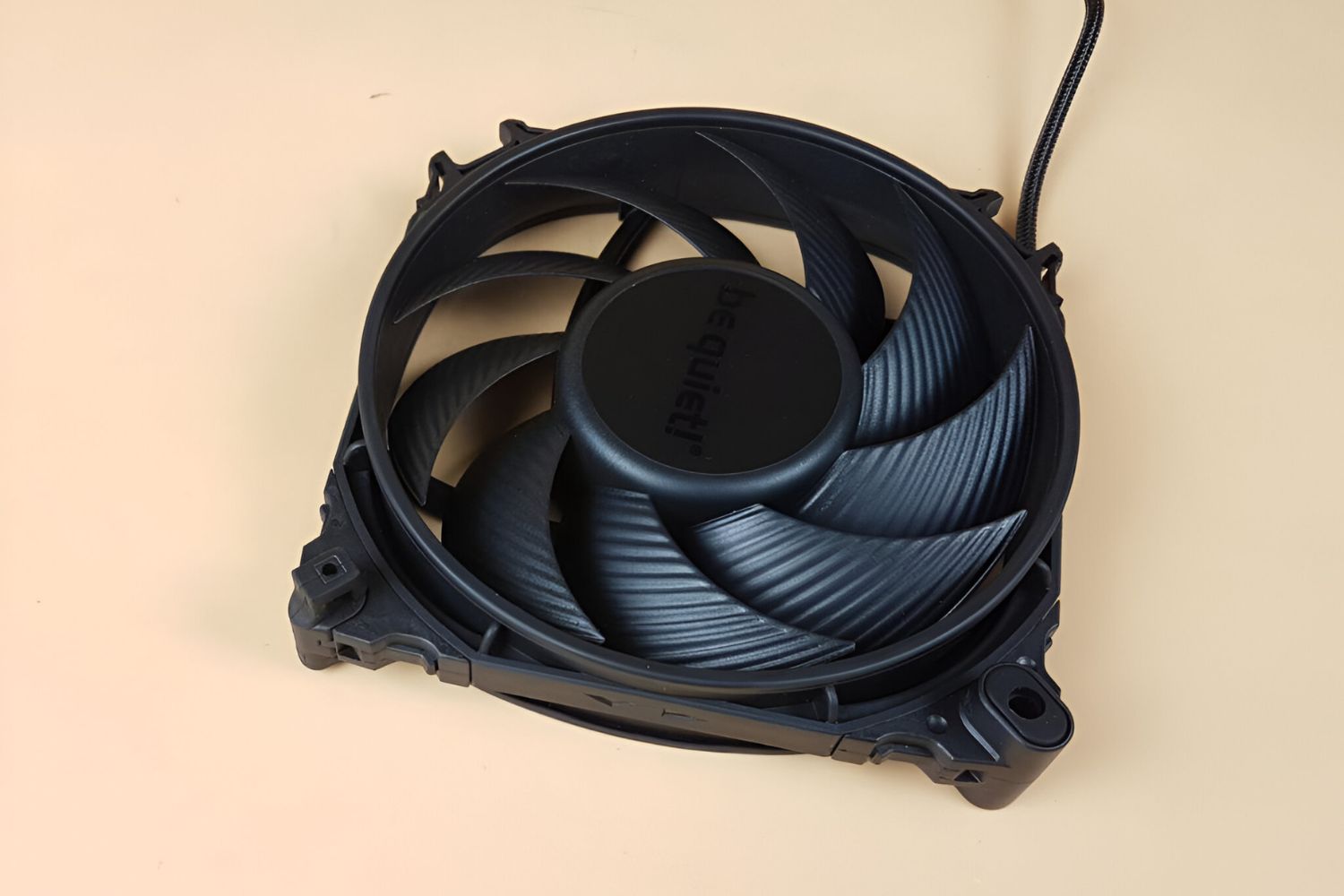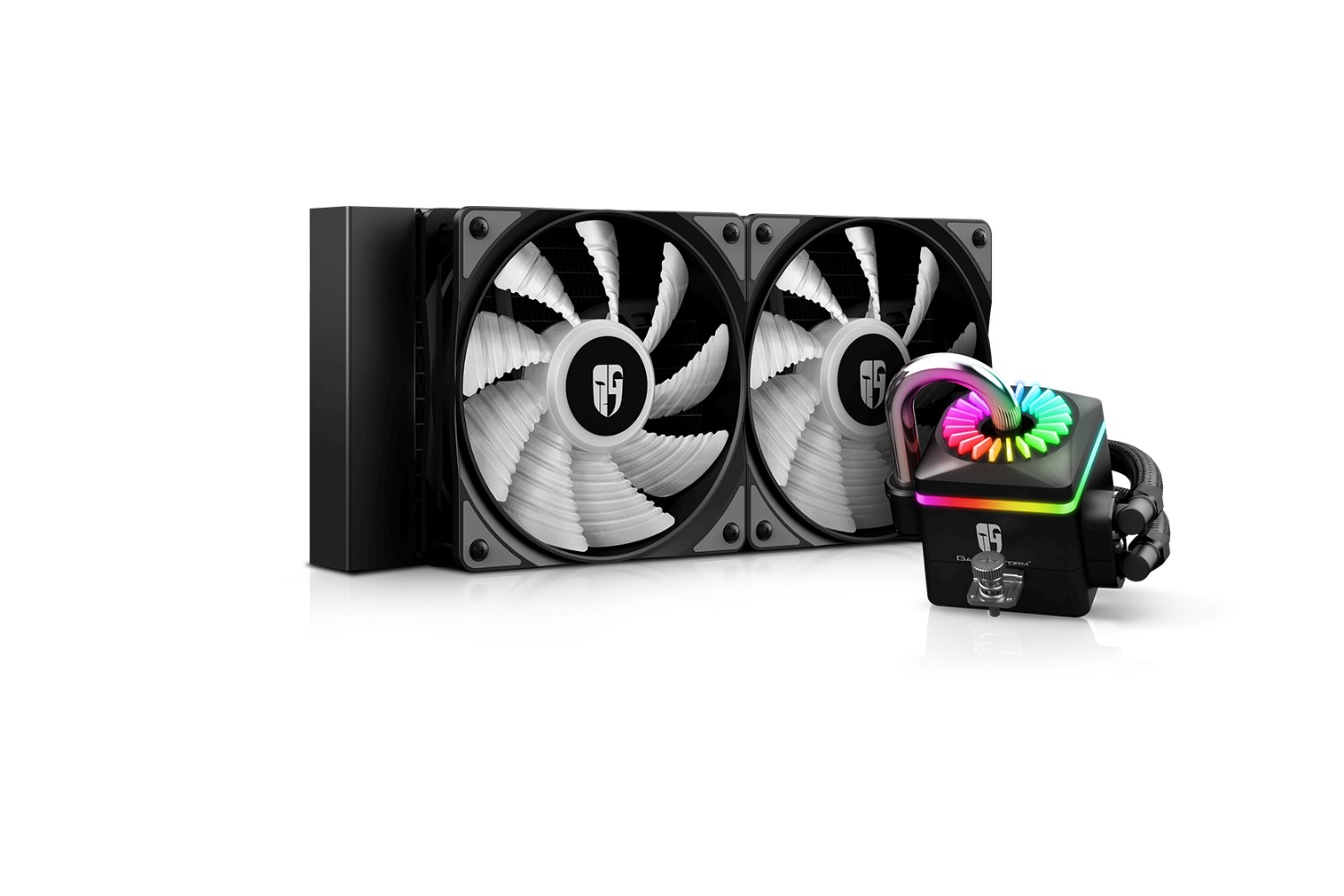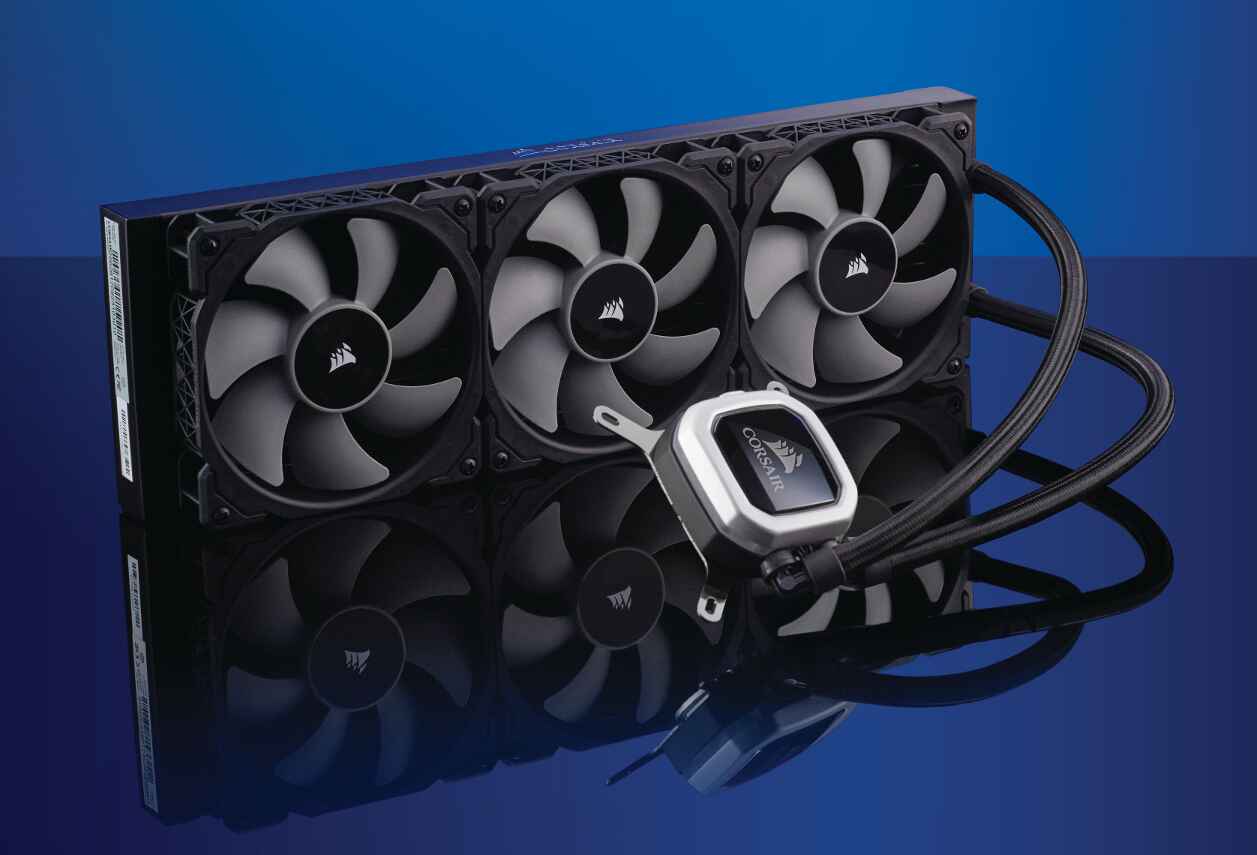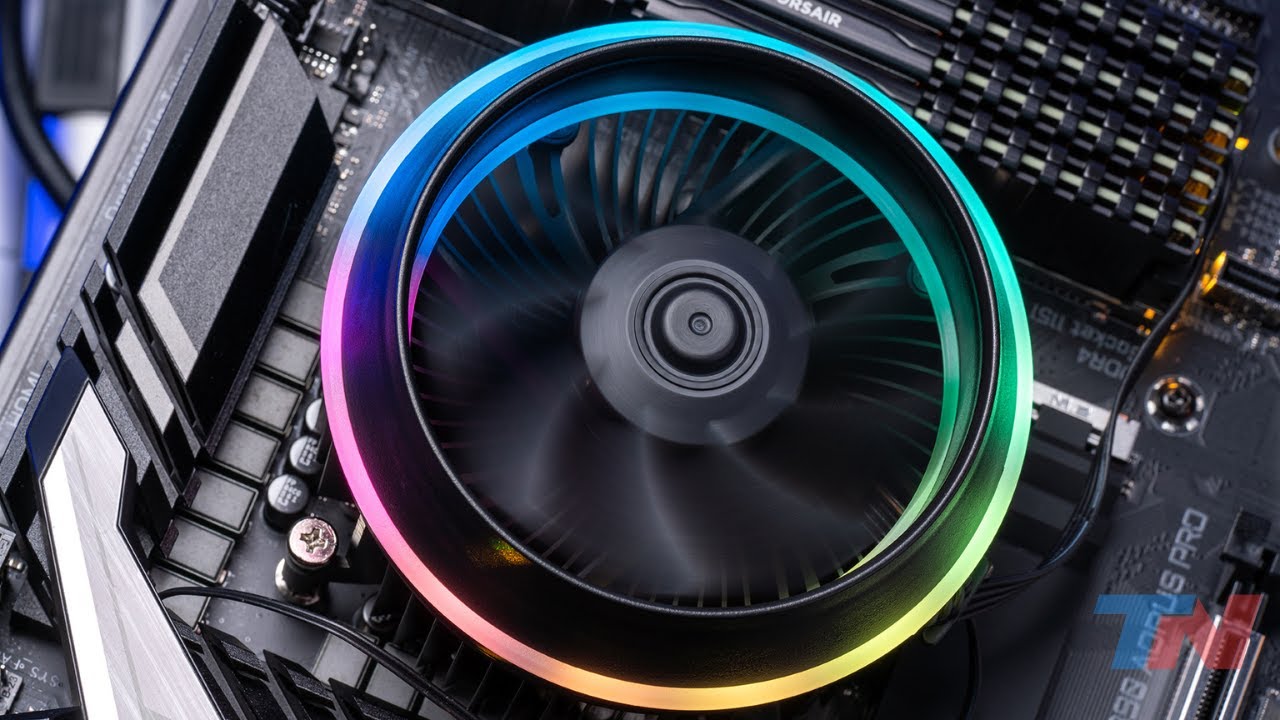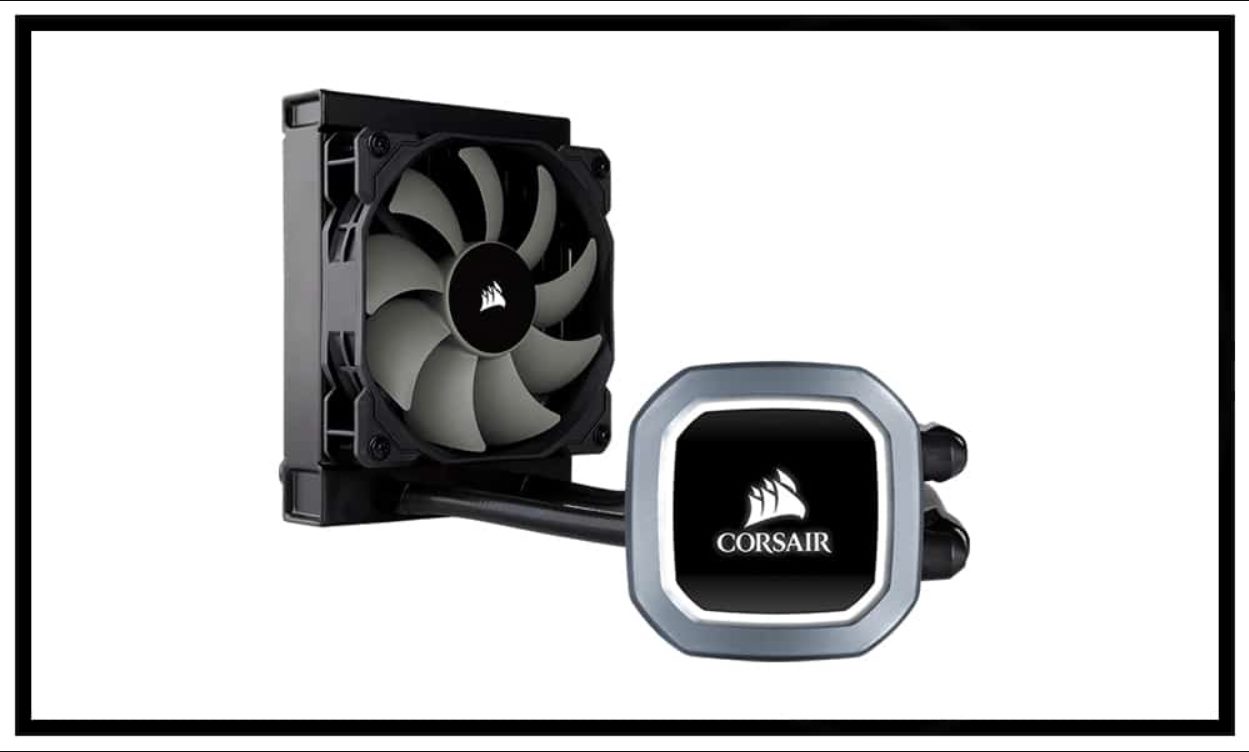Introduction
Welcome to the world of CPUs and cooling! Whether you are a tech enthusiast, a gamer, or just a casual computer user, understanding how to properly cool your CPU is crucial to ensure optimal performance and longevity of your system. CPUs, or Central Processing Units, are the brains of your computer, responsible for executing instructions and performing calculations.
As CPU technology advances and processors become more powerful, they generate more heat. Excessive heat can lead to reduced performance, system instability, and even permanent damage to your CPU. This is where CPU cooling comes into play – it helps dissipate the heat generated by the CPU and keeps it operating at optimal temperatures.
In this article, we will explore why cooling your CPU is important, the factors that affect CPU temperature, the different types of CPU cooling methods available, best practices for CPU cooling, and some tips to improve CPU cooling efficiency.
It’s worth mentioning that while many modern CPUs come with built-in thermal protection mechanisms, relying solely on these safeguards is not enough. By implementing proper cooling techniques, you can maintain lower temperatures, prolong the lifespan of your CPU, and even potentially achieve better performance.
So, let’s dive into the world of CPU cooling and discover how to keep your processor chilling comfortably!
Why Cooling Your CPU is Important
Cooling your CPU is vital for several reasons. Firstly, CPUs generate a significant amount of heat when they are under heavy workloads or during intense gaming sessions. If this heat is not effectively dissipated, it can lead to thermal throttling, where the CPU automatically reduces its clock speed to prevent overheating. This performance degradation can result in sluggish system performance and reduced responsiveness.
Secondly, high temperatures can shorten the lifespan of your CPU. Excessive heat can cause the delicate components of the CPU to degrade over time, leading to early failure. By keeping your CPU cool, you are not only ensuring reliable and consistent performance but also increasing its longevity.
Furthermore, cooling your CPU can also have a positive impact on overall system stability. When a CPU becomes too hot, it can cause system crashes, freezing, or even spontaneous shutdowns. This can lead to data loss and interrupted workflow, not to mention the frustration it can cause. By utilizing effective cooling methods, you can prevent these issues and maintain a stable computing experience.
In addition to performance and longevity benefits, cooling your CPU can also contribute to a quieter and more comfortable computing environment. Air cooling, for example, utilizes fans to dissipate heat, and with proper airflow management, it can effectively reduce the noise generated by the CPU cooler. This is especially important for users who value a quieter working or gaming space.
Overall, cooling your CPU is not only important but essential. It allows you to maximize the performance of your CPU, extend its lifespan, ensure system stability, and create a comfortable computing experience. So, let’s explore the factors that affect CPU temperature and understand how different cooling methods can help keep your CPU running cool and efficient!
Factors that Affect CPU Temperature
Several factors can influence the temperature of your CPU. Understanding these factors will help you identify potential issues and implement appropriate cooling solutions. Let’s explore the main factors that affect CPU temperature:
1. CPU Load: The workload on your CPU directly impacts its temperature. CPU-intensive tasks like gaming, video editing, or running demanding software can significantly increase the heat generated by the processor. Monitoring your CPU load can give you valuable insights into its temperature patterns.
2. Ambient Temperature: The ambient temperature of your surroundings affects the overall temperature inside your computer case. If the room temperature is high, it becomes harder for the CPU cooler to dissipate the heat effectively, leading to increased CPU temperatures.
3. Cooling Solutions: The type and quality of the cooling solution you use play a crucial role in determining CPU temperature. The stock cooler that comes with your CPU may not be sufficient for heavy workloads, and aftermarket coolers with better heat dissipation capabilities may be required. Additionally, poor airflow inside your computer case can also impact CPU temperatures.
4. Thermal Paste Application: The correct application of thermal paste is essential for efficient heat transfer between the CPU and the cooling solution. If the thermal paste is not applied properly or has deteriorated over time, it can create a barrier that reduces heat dissipation, leading to higher CPU temperatures.
5. Overclocking: Overclocking, the process of increasing the clock speed of your CPU beyond its default settings, can result in higher temperatures. When you push your CPU beyond its designed limits, it generates more heat that needs to be effectively managed through proper cooling solutions.
6. Dust Accumulation: Dust accumulation on CPU heat sinks, fans, and air filters can hinder airflow and impede heat dissipation. Regularly cleaning your computer components, especially the CPU cooler, can prevent dust buildup and maintain optimal cooling performance.
7. Case Design: The overall design and layout of your computer case can impact CPU temperatures. Cases with good cable management, proper fan placement, and adequate ventilation can provide better airflow, leading to lower temperatures.
By considering these factors and making necessary adjustments, you can effectively manage and control your CPU temperatures. Next, let’s explore the different types of CPU cooling methods available.
Types of CPU Cooling Methods
When it comes to CPU cooling, there are several methods available, each with its own strengths and limitations. Let’s explore the three main types of CPU cooling methods:
1. Air Cooling: Air cooling is the most common and affordable method for cooling CPUs. It involves using a combination of heat sinks and fans to dissipate heat. The heat sink, typically made of metal, absorbs heat from the CPU, while the fan blows air over the heat sink to cool it down. Air cooling is relatively easy to install, requires minimal maintenance, and provides adequate cooling for most CPUs, especially when paired with high-quality fans and proper airflow management.
2. Liquid Cooling: Liquid cooling, also known as water cooling, is a more advanced cooling method that uses liquid coolant to transfer heat away from the CPU. It consists of a water block, which is placed on the CPU, and a radiator, which dissipates the heat from the liquid coolant. Liquid cooling systems can offer better cooling performance compared to air cooling, especially for overclocked CPUs or systems with high heat output. However, they are generally more expensive, require more technical knowledge for installation, and may require regular maintenance to prevent leaks and ensure optimal performance.
3. Thermoelectric Cooling: Thermoelectric cooling is a less common and more specialized method that utilizes the Peltier effect to cool the CPU. Peltier devices consist of two dissimilar metals connected at junctions and can transfer heat from one side to the other when an electric current is applied. This method can achieve extremely low temperatures but comes with higher costs, complexity, and energy consumption. Thermoelectric cooling is typically used in niche applications where extreme cooling is required, such as high-performance computing or overclocking competitions.
These are the primary CPU cooling methods available, each offering different levels of performance, costs, and complexity. It’s important to assess your specific needs, budget, and technical expertise before deciding on the most suitable cooling method for your CPU.
Now that we have explored the types of CPU cooling methods, let’s move on to the best practices for CPU cooling to ensure optimal performance and longevity of your processor.
Air Cooling
Air cooling is the most common and widely used method for cooling CPUs. It involves the use of heat sinks and fans to dissipate heat generated by the CPU. The heat sink is a metal component that sits on top of the CPU and absorbs the heat, while the fan blows air over the heat sink to cool it down. This process helps maintain the CPU temperature within safe limits.
Here are some key points to consider when using air cooling for your CPU:
1. Choose a suitable heat sink: Heat sinks come in different sizes and designs, and choosing the right one depends on factors like CPU socket type, TDP (Thermal Design Power) of the CPU, and available space in your computer case. Larger heat sinks with more surface area generally provide better cooling performance.
2. Optimize airflow: Proper airflow inside your computer case is crucial for effective air cooling. Ensure that there is a clear airflow path from the front to the back of the case and that hot air generated by the CPU is efficiently expelled. Installing additional case fans can help improve airflow and reduce CPU temperatures.
3. Apply thermal paste correctly: Thermal paste is a compound that enhances heat transfer between the CPU and the heat sink. Apply a thin, even layer of thermal paste on the CPU before attaching the heat sink. This ensures optimal contact and improves the efficiency of heat dissipation.
4. Clean your cooling components: Dust accumulation on the heat sink and fans can hinder airflow, reducing cooling performance. Regularly clean your CPU cooler using a can of compressed air or a soft brush to remove dust and debris. This will help maintain optimal cooling efficiency over time.
5. Monitor CPU temperatures: Use software utilities or BIOS settings to monitor your CPU temperatures regularly. This will help you identify any potential issues, such as high temperatures during heavy workloads, and take appropriate measures to mitigate them.
6. Consider aftermarket cooler options: Stock coolers provided with CPUs are usually sufficient for normal usage. However, if you engage in CPU-intensive tasks or overclocking, upgrading to an aftermarket cooler with better cooling performance can be beneficial. These coolers often come with larger heat sinks, more efficient fans, and improved heat dissipation capabilities.
Air cooling offers a cost-effective and reliable solution for cooling your CPU. With proper heat sink selection, airflow management, and regular maintenance, air cooling can effectively keep your CPU temperatures within safe limits, ensuring optimal performance and longevity.
Next, we’ll explore the second CPU cooling method – liquid cooling.
Liquid Cooling
Liquid cooling, also known as water cooling, is a more advanced method for cooling CPUs compared to air cooling. It involves the use of liquid coolant to transfer heat away from the CPU, providing more efficient cooling performance. Liquid cooling systems consist of a water block, pump, radiator, and fans. Here’s what you need to know about liquid cooling:
1. Water Block: The water block is the component that makes direct contact with the CPU. It transfers heat from the CPU to the liquid coolant, allowing for effective heat dissipation.
2. Pump: The pump circulates the liquid coolant through the system, ensuring proper flow and efficient heat transfer. It plays a crucial role in maintaining cooling performance.
3. Radiator: The radiator is responsible for dissipating the heat absorbed by the liquid coolant. It consists of several fins that help disperse the heat, and fans are usually mounted on the radiator to enhance airflow and accelerate heat dissipation.
4. Efficiency and Cooling Performance: Liquid cooling systems generally provide better cooling performance compared to air cooling, especially in demanding scenarios such as overclocking or heavy CPU workloads. The liquid coolant can effectively carry heat away from the CPU, resulting in lower temperatures and improved performance.
5. Noise Level: Liquid cooling systems tend to be quieter compared to air cooling. The absence of a fan directly attached to the CPU and the ability to disperse heat over a larger radiator surface reduce noise levels, providing a quieter computing experience.
6. Installation and Maintenance: Installing a liquid cooling system requires more technical expertise compared to air cooling. Proper installation includes mounting the water block correctly, attaching the radiator and fans, and ensuring secure connections. Maintenance involves periodic checks for leaks, cleaning the radiator fins from dust accumulation, and monitoring coolant levels.
7. Cost: Liquid cooling systems are generally more expensive compared to air cooling. They involve the cost of components such as the water block, pump, radiator, and fans. Additionally, maintenance and potential upgrades can incur additional expenses.
Liquid cooling offers superior cooling performance and a quieter operation, making it an ideal choice for enthusiasts, gamers, and users seeking maximum performance from their CPUs. However, it is important to weigh the costs, performance requirements, and technical considerations before deciding to invest in a liquid cooling system.
Now that we’ve explored liquid cooling, let’s move on to the third type of CPU cooling method – thermoelectric cooling.
Thermoelectric Cooling
Thermoelectric cooling is a specialized and less common method for cooling CPUs. It utilizes the Peltier effect, a phenomenon that occurs when an electric current is applied to a junction between two dissimilar metals, to transfer heat away from the CPU. Here’s what you need to know about thermoelectric cooling:
1. Working Principle: Thermoelectric cooling involves the use of Peltier devices, which consist of two metal plates separated by a semiconductor material. When an electric current is applied, one side of the device becomes cool while the other heats up. By placing the hot side on the CPU and the cool side in contact with a heat sink or radiator, heat is transferred away from the CPU.
2. Cooling Performance: Thermoelectric cooling can achieve extremely low temperatures, making it suitable for applications where extreme cooling is required, such as high-performance computing or overclocking competitions. However, it is important to note that thermoelectric cooling is less efficient compared to other methods and consumes more energy.
3. Energy Consumption: Thermoelectric coolers require a significant amount of energy to operate due to the inefficiencies of the Peltier effect. The power consumption can result in more heat being produced by the system overall. It is important to consider the energy requirements and ensure your power supply can handle the additional load.
4. Complexity and Cost: Thermoelectric cooling systems are more complex and expensive compared to air or liquid cooling. They require careful thermal management, including insulation, to prevent condensation and moisture buildup. Additionally, the cost of high-quality thermoelectric coolers can make them less accessible for mainstream users.
5. Maintenance: Thermoelectric cooling systems require regular maintenance, including checking for proper insulation, monitoring for condensation, and ensuring optimal contact between the Peltier device and the CPU/heat sink. Regular cleaning and maintenance are essential to maintain their cooling efficiency.
Thermoelectric cooling is a niche method that offers extreme cooling capabilities but comes with higher complexity, cost, and energy consumption. It is suitable for advanced users who require exceptional cooling performance or enthusiasts seeking to push their CPUs to the limits. For most users, air cooling or liquid cooling will provide sufficient cooling performance without the added complexities of thermoelectric cooling systems.
Now that we’ve explored the different types of CPU cooling methods, let’s move on to discussing best practices for CPU cooling to ensure optimal performance and longevity.
Best Practices for CPU Cooling
Regardless of the cooling method you choose, there are some fundamental best practices that can help optimize CPU cooling performance and ensure the longevity of your processor. Here are some key practices to follow:
1. Choose a Suitable Cooling Solution: Select a cooling solution that matches your CPU’s thermal requirements. Consider factors such as TDP (Thermal Design Power), overclocking potential, and available space in your computer case. Research and invest in a high-quality cooling solution from a reputable manufacturer.
2. Properly Install the Cooling Solution: Follow the manufacturer’s instructions to correctly install your cooling solution. Ensure the CPU cooler makes solid contact with the CPU, and if applicable, apply an appropriate amount of thermal paste to improve heat transfer. Double-check that all connections are secure and cables are not obstructing airflow.
3. Optimize Airflow: Maintain good airflow inside your computer case to prevent heat buildup. Use case fans strategically to ensure proper intake and exhaust airflow. Arrange cables neatly to avoid blocking airflow paths and clean your computer case regularly to remove dust that can obstruct airflow and increase temperatures.
4. Monitor and Adjust Fan Curves: Use software or BIOS settings to monitor fan speeds and CPU temperatures. Adjust fan curves if necessary to strike a balance between noise levels and cooling performance. Customize fan speeds to ramp up when CPU temperatures rise and lower when idle or under low load to optimize cooling efficiency.
5. Control Ambient Temperature: Keep your computer in a cool, well-ventilated room. Avoid placing your computer near heat sources or in direct sunlight. If necessary, use room cooling solutions like air conditioning or fans to maintain an ideal ambient temperature for your CPU.
6. Regularly Clean Cooling Components: Dust accumulation on cooling components can obstruct airflow and hinder cooling performance. Clean the CPU cooler, case fans, and heat sinks regularly using compressed air or a soft brush to remove dust. This will help maintain optimal cooling efficiency over time.
7. Avoid Overclocking without Proper Cooling: Overclocking can significantly increase CPU temperatures. If you plan to overclock your CPU, ensure that you have adequate cooling solutions in place to handle the extra heat generated. Attempting to overclock without proper cooling can lead to unstable performance, system crashes, and potential damage to your CPU.
8. Consider Ambient Environmental Factors: Keep in mind other environmental factors that can affect CPU cooling, such as humidity. High humidity can lead to condensation, which can damage components. Ensure proper insulation and humidity control measures if you live in a humid environment.
By following these best practices, you can optimize CPU cooling performance, maintain lower temperatures, and prolong the lifespan of your CPU. Remember that every system is unique, and it may require some trial and error to find the optimal cooling setup for your specific configuration.
Next, let’s explore some additional tips for improving CPU cooling efficiency.
Tips for Improving CPU Cooling Efficiency
In addition to following best practices, there are several tips you can implement to further enhance CPU cooling efficiency and maintain optimal temperatures. Consider the following tips:
1. Upgrade Your CPU Cooler: If you’re experiencing high CPU temperatures, consider upgrading to a more efficient and capable CPU cooler. Aftermarket coolers with larger heat sinks, multiple heat pipes, and high-performance fans can provide better heat dissipation and cooling performance.
2. Use High-Quality Thermal Paste: Invest in high-quality thermal paste for optimal heat transfer between the CPU and the cooler. Arctic Silver and Noctua NT-H1 are popular choices known for their superior performance. Ensure proper application by following the manufacturer’s instructions.
3. Improve Airflow with Additional Fans: Add more fans to your computer case, especially if you have poor airflow. Consider installing intake fans at the front of the case and exhaust fans at the rear or top. This will help create a positive airflow environment, drawing in cool air and expelling hot air effectively.
4. Consider Fan Placement and Direction: Pay attention to fan placement and the direction of airflow. Position fans to create a smooth and continuous airflow path, avoiding obstructions and ensuring efficient heat dissipation. Consider using fans with a static pressure design for optimum cooling performance on heat sinks and radiators.
5. Use Fan Speed Controller: If your motherboard supports it, use a fan speed controller or software utilities to manually adjust fan speeds. You can increase fan speeds during heavy workloads or gaming sessions for improved cooling and lower them during idle or low-load scenarios to minimize noise levels.
6. Install Designated GPU Cooler: If you have a dedicated graphics card, ensure it has a dedicated cooler for efficient heat dissipation. This will minimize the heat transferred to the rest of the system, reducing the workload on your CPU cooler and overall temperatures.
7. Good Cable Management: Arrange cables properly to maximize airflow within your computer case. Use cable ties or cable management solutions to route cables away from fans and obstructions. Neat and organized cables promote better airflow and reduce the chances of cables blocking cool air intake or disrupting heat dissipation.
8. Consider Undervolting: Undervolting is the process of reducing the voltage supplied to the CPU, which can lead to lower temperatures and power consumption. This technique can be effective in lowering CPU temperatures, especially if you don’t need the maximum performance from your processor.
9. Maintain a Clean PC: Regularly clean your computer to remove dust and debris that can accumulate on cooling components. Dust acts as an insulator and impedes heat transfer, leading to increased temperatures. Use compressed air or a soft brush to clean out the CPU cooler, fans, and any other areas prone to dust buildup.
Implementing these tips will help improve CPU cooling efficiency, lower temperatures, and ensure your system operates optimally. Experiment with different techniques and configurations to find the combination that works best for your specific setup.
Now that we have covered tips for improving CPU cooling efficiency, let’s address some common misconceptions about CPU cooling.
Common Misconceptions about CPU Cooling
When it comes to CPU cooling, there are several misconceptions and myths that can confuse users and lead to ineffective cooling practices. Let’s debunk some of the common misconceptions about CPU cooling:
1. More fans always mean better cooling: While adding more fans can improve airflow and cooling to a certain extent, it is not always necessary or beneficial. It’s important to have a balanced and properly configured airflow system, rather than just adding as many fans as possible. Focus on optimizing fan placement, direction, and quality over sheer quantity to achieve optimal cooling performance.
2. The colder, the better: While it’s true that lower temperatures are generally preferred for optimal CPU performance, going excessively cold is unnecessary and can even be detrimental. Extreme cooling methods like sub-zero cooling can introduce condensation and moisture-related issues that may damage your components. It’s essential to maintain temperatures within safe operating ranges rather than pursuing the lowest possible temperature.
3. All CPUs require liquid cooling: While liquid cooling is known for its superior cooling capabilities, not all CPUs require it. Many CPUs, especially those with lower power requirements and moderate workloads, can be adequately cooled with air cooling solutions. Liquid cooling should be considered for high-performance CPUs, overclocked systems, or users with specific requirements, such as noise reduction.
4. Thermal paste needs frequent replacement: Thermal paste does not necessarily need frequent replacement unless there is a specific issue. High-quality thermal paste, properly applied, can provide long-lasting heat transfer capabilities. Reapplying thermal paste should be done when temperatures are noticeably higher or during routine maintenance, rather than as a regular maintenance practice.
5. Overclocking requires exotic cooling methods: While exotic cooling methods like liquid nitrogen or extreme sub-zero cooling can enable more extreme overclocking, they are not essential for typical overclocking. Moderate overclocking can often be achieved with high-quality air or liquid cooling solutions, without the need for extreme measures that come with higher costs and complexities.
6. The stock cooler is always inadequate: While stock coolers provided with CPUs may not offer the same level of cooling performance as aftermarket coolers, they are often sufficient for normal usage and non-intensive workloads. Stock coolers are designed to match the thermal requirements of the CPU and should be suitable for most users who don’t engage in heavy gaming or CPU-intensive tasks.
7. Cooling is only necessary for high-end CPUs: Cooling is important for all CPUs, regardless of their performance level. Even lower power CPUs can generate heat under heavy workloads or during extended usage periods. Proper cooling ensures optimal performance, longevity, and stability of the CPU, regardless of its specifications.
By understanding these common misconceptions, you can make informed decisions about your CPU cooling setup and avoid unnecessary complexities or expenses. It’s essential to base your cooling decisions on accurate information and practical requirements rather than popular myths and misconceptions.
Now that we have dispelled these misconceptions, let’s conclude our exploration of CPU cooling.
Conclusion
CPU cooling is an essential aspect of maintaining optimal performance, stability, and longevity for your computer system. Understanding the importance of CPU cooling and implementing effective cooling methods can significantly improve overall performance and reduce the risk of overheating and potential damage to your CPU.
In this article, we explored why cooling your CPU is crucial, as it helps prevent performance degradation, extends the lifespan of the CPU, and ensures system stability. We discussed the factors that affect CPU temperature, including CPU load, ambient temperature, cooling solutions, thermal paste application, overclocking, dust accumulation, and case design.
We then delved into the three main types of CPU cooling methods. Air cooling, the most common method, utilizes heat sinks and fans to dissipate heat. Liquid cooling, a more advanced option, employs liquid coolant circulated by a pump to cool the CPU. Thermoelectric cooling, although less common, uses the Peltier effect to achieve extreme cooling capabilities.
To achieve optimal CPU cooling, we provided best practices, including selecting suitable cooling solutions, optimizing airflow, applying thermal paste correctly, cleaning cooling components, and monitoring temperatures. Additionally, we shared tips for further improving CPU cooling efficiency, such as upgrading CPU coolers, utilizing fan speed controllers, and maintaining a clean PC.
We also addressed common misconceptions surrounding CPU cooling, debunking myths about fan quantity, temperature extremes, liquid cooling necessity, thermal paste replacement, exotic cooling for overclocking, stock cooler adequacy, and cooling requirements for different CPU levels.
In conclusion, implementing proper CPU cooling techniques tailored to your specific requirements is vital to ensure the optimal performance, stability, and lifespan of your CPU. By following the best practices, considering different cooling methods, and busting common misconceptions, you can maintain lower temperatures, enhance system performance, and protect your valuable CPU investment.
Remember, cooling should be a priority in any computer setup. So take the time to assess your needs, choose the appropriate cooling solutions, and implement the strategies discussed in this article. Your CPU will thank you for it!







